Waterproof and Weatherproof: HDPE Boards Built for Harsh Conditions
From coastal docks to sun-exposed rooftops and rain-soaked construction zones, many projects require materials that can endure the elements. In these challenging environments, traditional materials like wood, metal, and even composite panels often fail—cracking, warping, rotting, or rusting over time.
Enter HDPE (High-Density Polyethylene) boards. Known for their exceptional resistance to water, UV rays, chemicals, and impact, HDPE boards are becoming the go-to material for outdoor, marine, and industrial applications.
This blog explores why HDPE boards are built for harsh conditions—and why they’re a smarter investment for your most demanding projects.
1. 100% Waterproof: Won’t Absorb, Swell, or Rot
Unlike plywood or MDF, HDPE is a non-porous plastic, meaning it does not absorb water. This gives it a significant edge in humid or wet environments.
Benefits of HDPE’s waterproof properties:
-
Will never swell or delaminate when exposed to water
-
Perfect for boat interiors, docks, outdoor kitchens, and more
-
Ideal for rain-prone and high-humidity regions
-
Resistant to mold and mildew, unlike wood-based materials
No matter how wet the environment gets, HDPE holds its form and function—without treatments, coatings, or sealants.
2. UV and Sunlight Resistance
Direct sun exposure is a major threat to most materials, causing fading, brittleness, and eventual breakdown. HDPE boards, however, are UV-stabilized, giving them superior resilience against solar damage.
Why it matters:
-
Won’t fade, chalk, or become brittle in sunlight
-
Ideal for use in rooftop structures, signage, and exterior panels
-
Outperforms painted wood or composites that require regular refinishing
-
Holds up in desert heat, coastal sun, and alpine UV exposure
If you need material that can live outside 365 days a year, HDPE delivers with long-term consistency.
3. Freeze and Cold-Weather Flexibility
In freezing temperatures, many materials become brittle and prone to cracking. HDPE remains flexible and impact-resistant, even in sub-zero conditions.
Cold-weather durability includes:
-
Withstanding expansion and contraction cycles without warping
-
No cracking or splitting due to frost
-
Consistent performance in snow, sleet, and ice
-
Ideal for ski resorts, northern climates, and winter-use gear
This makes HDPE an excellent option for cold-weather builds, ice rinks, RV accessories, and snow-prone installations.
4. Wind and Impact Resistance
Harsh conditions aren’t just about temperature and moisture—they also include physical force. Whether it's windblown debris or heavy equipment, HDPE boards offer reliable protection.
Impact-resistant advantages:
-
Doesn’t dent, shatter, or splinter
-
Great for high-traffic areas and load-bearing surfaces
-
Resilient against falling tools, machinery, or equipment
-
Ideal for outdoor enclosures, protective barriers, and marine docks
HDPE boards offer peace of mind when you're building in unpredictable, high-impact environments.
5. Chemical and Corrosion Resistance
Beyond the elements, HDPE also stands up to chemical exposure—a crucial benefit for industrial, marine, or agricultural use.
Key features:
-
Resistant to oils, fuels, solvents, acids, and salts
-
Will not rust or corrode like metal
-
Doesn’t degrade when exposed to cleaning agents
-
Suitable for chemical labs, farms, boatyards, and industrial floors
It’s also easy to sanitize, making it ideal for both rugged environments and clean spaces.
6. Long-Term Performance Without the Upkeep
HDPE boards offer the trifecta of durability, weather resistance, and low maintenance. You don’t need to paint, seal, sand, or coat them to maintain appearance or functionality.
Long-term cost savings include:
-
No recurring maintenance labor or material costs
-
Reduced replacement cycles
-
Increased project ROI and time savings
-
Total reliability in hard-to-access or remote installations
Whether you’re installing dock skirting or outdoor cabinetry, HDPE ensures less hassle and more lasting value.
FAQs
Can HDPE be used for structural applications?
While not a structural load-bearing material like steel or pressure-treated lumber, HDPE is perfect for surfaces, enclosures, cabinetry, and decking.
Does HDPE come in different thicknesses?
Yes. Blue Gator offers .250” and .375” marine boards, and .375” HDPE sheets, suitable for various applications.
Will HDPE fade over time in the sun?
No. HDPE boards are UV-stabilized, so they resist fading and brittleness.
Is HDPE better than composite wood panels?
For weather resistance, yes. HDPE is fully waterproof, while composite panels can still absorb moisture over time.
Can HDPE be painted?
No, HDPE is non-porous and paint won’t adhere well—but it comes in neutral and practical color options like white and black.
Conclusion: HDPE Stands Up to the Harshest Environments
From storm-soaked docks to sunbaked rooftops and freezing ski lodges, HDPE boards perform where other materials fail. Their waterproof, weatherproof, and low-maintenance characteristics make them a superior choice for builders, boaters, landscapers, and DIYers who need rugged, reliable results.
If you need material that’s ready for the real world, HDPE is your all-weather solution.
Contact Us
Need help selecting the right HDPE thickness or sheet for your next extreme-weather project?
📞 Call us at 628-800-6287
📩 Contact Blue Gator Pro to speak with an expert or request a quote.
